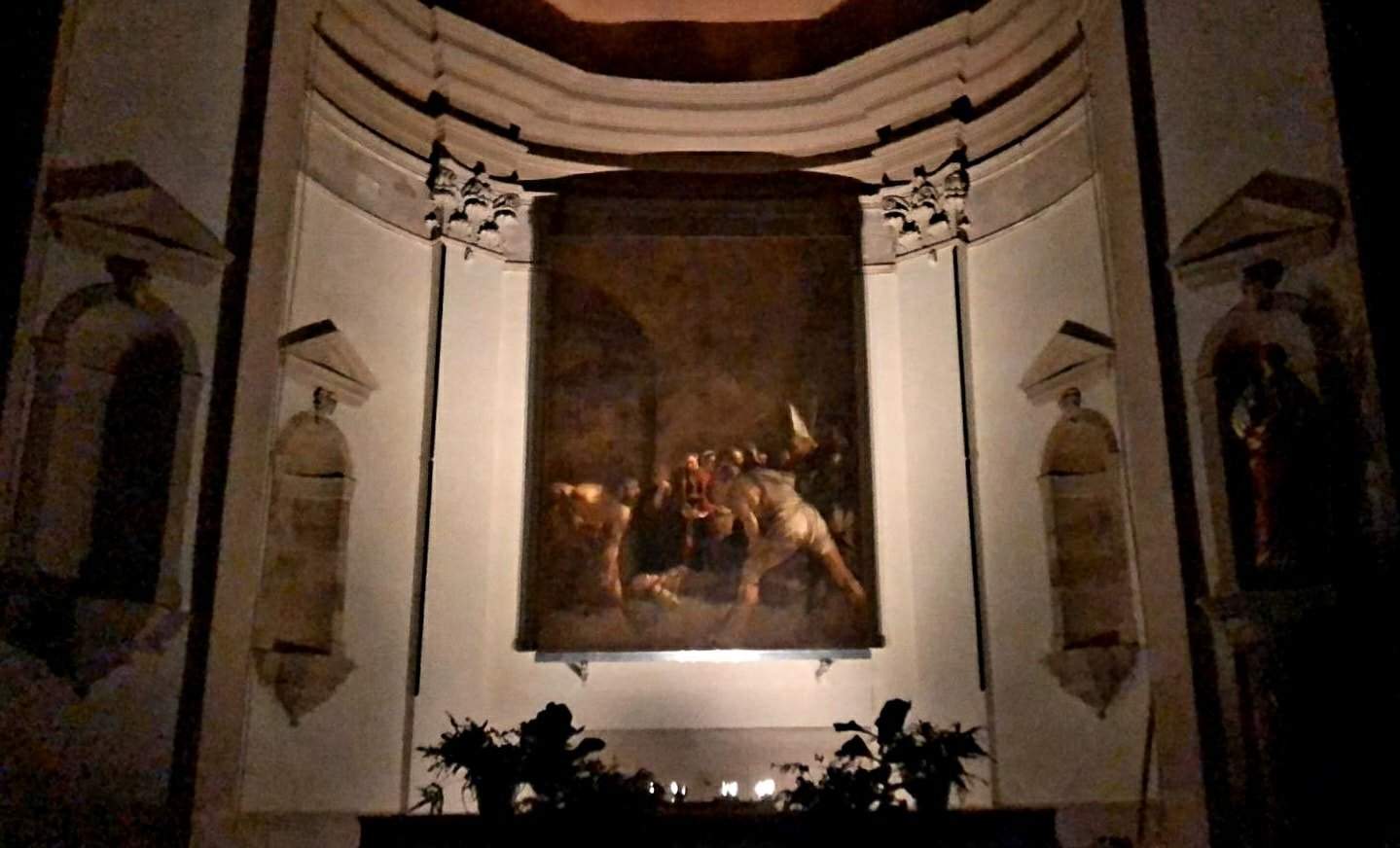The Seppellimento di santa Lucia, the large canvas that Caravaggio (Michelangelo Merisi; Milan, 1571 - Rome, 1610) executed, in 1608, for the church of Santa Lucia extra Moenia (also known as “Santa Lucia alla Borgata” after the name of the neighborhood where it is located, or as “Santa Lucia al Sepolcro”) in Syracuse, is returned to the Sicilian city after being absent for three months, since it went on loan to the Mart in Rovereto, in an exhibition that was accompanied by a thousand controversies precisely because of the painting’s transfer to Trentino.
The operation brought 12,000 visitors to the Mart in Rovereto in just twenty days of exhibition (in fact, the Mart had to close its doors like all Italian museums, and the exhibition was not extended), and above all, it returned to Syracuse the painting, which underwent a diagnostic campaign and conservation work that now allows it to return to the place for which the work was conceived, the church of Santa Lucia extra Moenia. This rediscovered arrangement follows, therefore, the implementation of necessary interventions to ensure adequate safety standards for the painting, commissioned by the Superintendency of Syracuse and financed by the Mart within the framework of agreements with the Fondo Edifici di Culto del Ministero dell’Interno, owner of the painting.
In 2011, in fact, the work, kept in the church of the Borgata, was transferred to the church of Santa Lucia alla Badia, in the historic center of Syracuse (where it had, moreover, been leaning against a 1579 canvas by Deodato Guinaccia, an important 16th-century Sicilian painter), with the idea that the transfer was temporary, because its natural location did not guarantee adequate conservation conditions. Nine years have passed and the painting can therefore finally return home.
The Ministry of the Interior lets it be known that the return of the painting, which is of great importance to the city of Syracuse, facilitated by the collaboration between regional and local institutions, the Archdiocese of Syracuse, the Superintendency, the FEC, the prefect of Syracuse and the Mart of Rovereto, will be recalled, as soon as possible, in a meeting with the authorities concerned, in the presence of the Minister of the Interior, Luciana Lamorgese, and the president of the Mart, Vittorio Sgarbi, who has directly followed all the stages of the enhancement of the work.
“Great excitement for the return of the canvas dedicated to the burial of the patron saint of Syracuse,” commented the mayor of Syracuse, Francesco Italia. “Yesterday afternoon, the work returned to the Basilica Sanctuary of Santa Lucia Extramoenia, the place for which it was commissioned by the city’s Senate. A fundamental return for the cultural rebirth of the Borgata and the entire urban fabric of the area.”
Pictured: the Caravaggio altarpiece in its placement in the church of Santa Lucia extra Moenia.
 |
| Caravaggio, Syracuse's St. Lucy returns, after years, to the church for which she was conceived |
Warning: the translation into English of the original Italian article was created using automatic tools. We undertake to review all articles, but we do not guarantee the total absence of inaccuracies in the translation due to the program. You can find the original by clicking on the ITA button. If you find any mistake,please contact us.